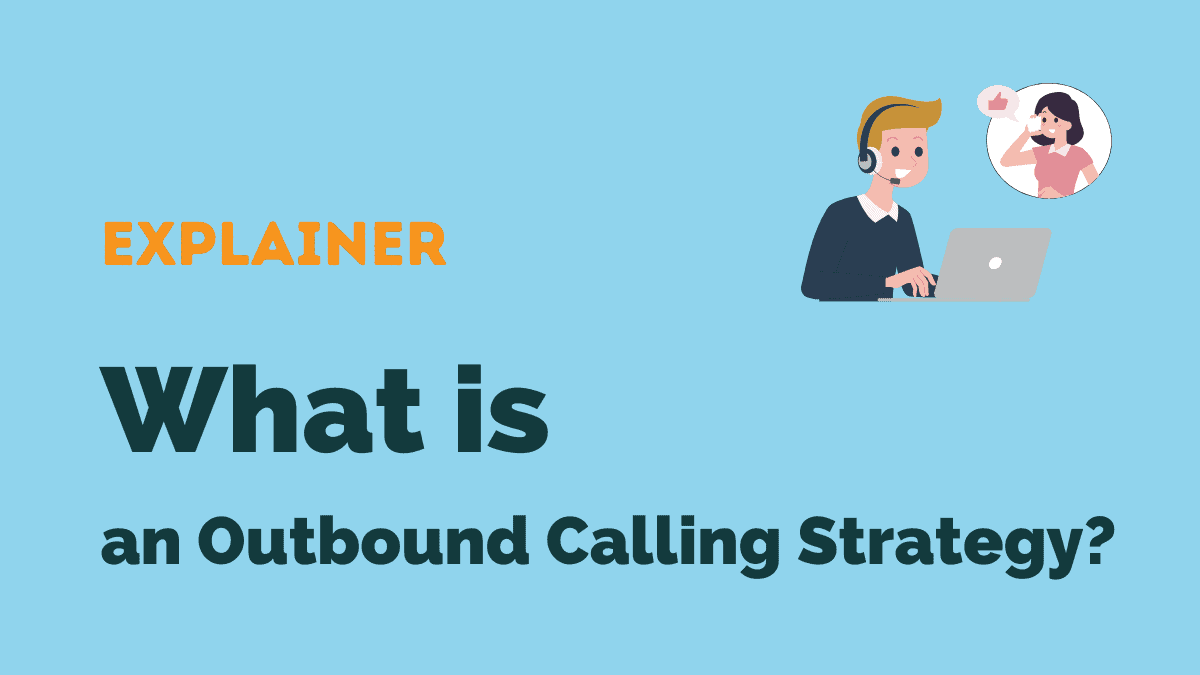VoIP technology has made outbound calling more affordable than ever. It’s no longer a type of contact used only for high-value sales calls.
But, this doesn’t mean you no longer need to think about how you make outbound calls. An effective outbound calling strategy will ensure you maximize your agent’s efficiency and outbound budget.
In this post:
- What is an Outbound Calling Strategy?
- How outbound calling benefits you and your customers
- Good outbound calling strategy features
What is an Outbound Calling Strategy?
An outbound calling strategy is the plan you use to ensure your outbound calls are made effectively.
Your strategy will typically consist of three main parts:
- How you prioritize calls
- How you schedule calls
- How you ensure the right agent is assigned the right call
Get this right, and you’ll be able to offer a better experience for customers, increase efficiency in your contact center, and increase sales.
How outbound calling benefits you and your customers
Smart outbound calling helps your contact center and customers in many ways. Here are four of the biggest benefits:
#1 Proactively help customers
Outbound calling allows you to contact customers before they are aware of issues.
A common example of this is banks calling customers when they recognize a suspicious transaction on the customer’s card.
Proactive outbound calling provides significant benefits for both customers and the call centers.
The customer gets a much more streamlined experience. They don’t have to put much effort in to solve their issues. In many cases, the issue is solved before they even know it exists—as with the bank example above.
Meanwhile, call centers get a much lower inbound call volume. Customers don’t need to get in touch when they have an issue.
#2 Reduce waiting times
Customers hate waiting on hold. But it’s impossible to answer every customer call as soon as it arrives. Luckily, a good outbound calling strategy can help.
With virtual queuing, you can automatically arrange callbacks when customers contact you during busy times. The customer hangs up and then receives your call when they reach the front of the queue.
This benefits the customer, who has a shorter wait time than they would otherwise. But it also benefits your contact center because you can create your own rules around how to prioritize callbacks.
Some strategies to manage callbacks include:
- By inbound call volume: Outbound calls are only made when inbound volume hits a certain level.
- By time slot: Arrange to call customers at a specific time slot.
- By agent availability: Make outbound when agents become available.
Choose the ones that make the most sense for your business so you can make callbacks as efficiently as possible.

#3 Make more sales
Callbacks are extremely effective when it comes to automating sales calls.
If you have a list of leads, you can use outbound calling to manage these calls and automatically provide reps with a new lead once their current call finishes.
You can also integrate your outbound calling system with your lead generation methods to ensure you never miss an opportunity.
For example, when someone requests a callback via your website, your system will automatically schedule the call and provide the rep who handles it with relevant information.
#4 Retain more customers
Outbound calling works for customer retention too. You can automate calls to go out when a customer is nearing their contract expiry date.
This is an opportunity for the rep to provide any help the customer needs with renewing.
Another method of reducing churn with outbound is to automate calls based on customer feedback.
If a customer reports a negative experience, your system will automate a call so an agent can learn more about the problem and potentially solve it before it leads the customer to leave.
Good outbound calling strategy features
A good outbound calling strategy consists of many parts. Here are some of the main ones.
Call list compilation
A good outbound calling strategy should let you compile call lists in a way that is beneficial to your business. What’s more, this needs to happen automatically.
The challenge is how to organize calls from multiple sources.
The tool needs to tell apart a sales call from a call that was created due to an automated callback relating to a support query.
It should also know which of these calls to send out first.
Agent selection
Once the call list is created, the tool needs to assign each call to an agent with the skills required to make it.
This is typically based on the agent’s role: sales calls go to sales reps, tech support calls go to IT, etc. But it can also be based on factors like the languages the rep speaks or their location.
System integration
A good outbound calling strategy integrates with tools across your system. This allows you to use data from any platform to improve your outbound calling processes.
There are a ton of ways that this can be helpful. Some of the most common include:
- Use data from a website form to automate an outbound call
- Send customer data from a CRM to an agent before they make a call
- Identify system issues and proactively alert customers.
Automation
One of the biggest benefits of integration is that you can automate all the above actions. A trigger in one tool results in an action in another.
Also, look for No-Code tools that enable anyone to create these processes. With these platforms, automating call center workflows is as simple as choosing from a list of predefined conditions and actions.
Virtual queuing
One of the key outbound calling features is virtual queuing. This allows callers to arrange a callback instead of waiting on hold. They can continue with their day until they receive a call from your agent.
This improves the customer experience as callers hate waiting on hold.
But it also benefits your business as you can reduce call volume during your busiest times and instead handle them when call volume is lower.
Next steps for creating a killer outbound strategy
If you’ve read this far, you’re clearly interested in using outbound calling in your business.
For the next steps, we recommend
- Thinking about the types of use cases that will benefit your company
- Researching and testing platforms that enable this
This will ensure you get an outbound calling solution that truly meets your needs.





